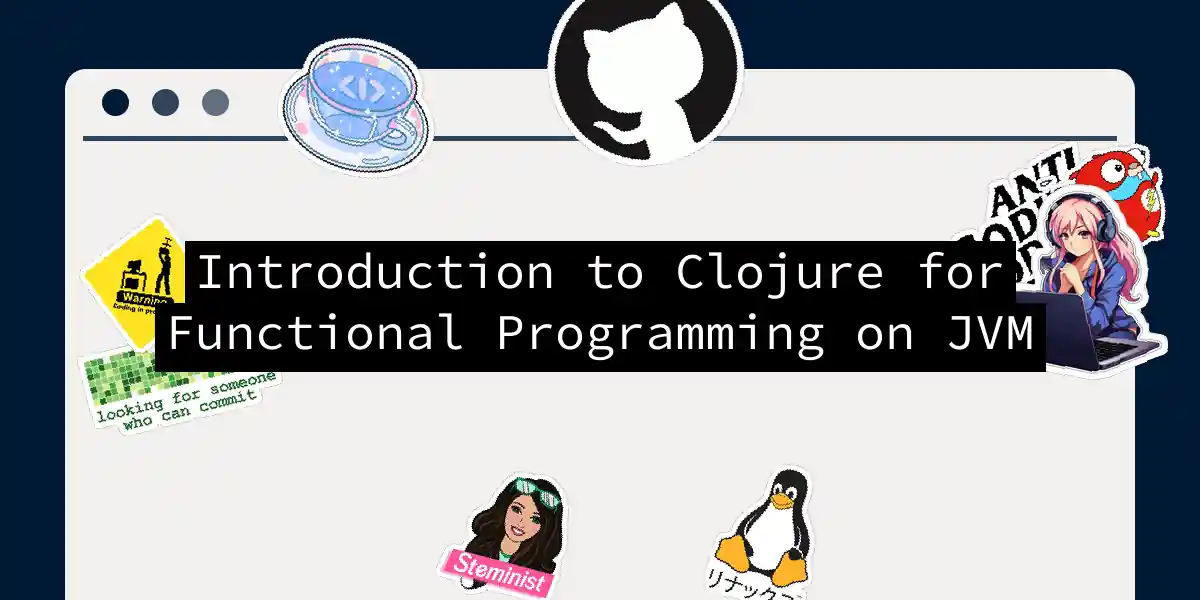What is Clojure?
Clojure is a modern, dynamic, and functional programming language that runs on the Java Virtual Machine (JVM). It’s a dialect of the Lisp programming language, known for its simplicity, efficiency, and powerful features. If you’re familiar with Java, you’ll find that Clojure offers a unique blend of functional programming paradigms with the robustness of the JVM ecosystem.
Why Clojure?
In today’s software development landscape, functional programming is gaining traction due to its ability to handle concurrency and parallelism with ease. Clojure is particularly well-suited for this, thanks to its design principles that emphasize immutability, concurrency, and interoperability with Java.
Immutability
One of the core principles of Clojure is immutability. This means that once a data structure is created, it cannot be changed. Instead, new data structures are created when modifications are needed. This approach simplifies reasoning about code and makes it easier to write concurrent programs.
Concurrency
Clojure provides several mechanisms for handling concurrency, making it an excellent choice for developing multithreaded applications. Its model for parallel programming includes tools like atoms, agents, and refs, which help manage state changes in a thread-safe manner.
Interoperability with Java
Clojure’s ability to seamlessly integrate with Java is one of its strongest features. You can call Java code from Clojure and vice versa, leveraging the vast ecosystem of Java libraries and frameworks. This interoperability makes Clojure a great choice for projects that need to interact with existing Java codebases.
Getting Started with Clojure
Setting Up Your Environment
To start with Clojure, you’ll need to set up your development environment. Here are the steps:
- Install Java: Since Clojure runs on the JVM, you’ll need to have Java installed.
- Install Leiningen: Leiningen is a popular build tool for Clojure projects. You can download it from the official Leiningen website.
- Choose an IDE: Most modern IDEs support Clojure, including Eclipse, NetBeans, and IntelliJ IDEA. You can also use lightweight editors like Emacs or Visual Studio Code with the appropriate plugins.
Basic Syntax
Clojure’s syntax is based on Lisp’s S-expressions. Here’s a simple “Hello, World!” example:
(println "Hello, World!")
This code snippet demonstrates the basic syntax of Clojure, where expressions are enclosed in parentheses.
Defining Functions
Functions in Clojure are defined using the defn macro:
(defn greet [name]
(println (str "Hello, " name "!")))
You can call this function by passing a name:
(greet "Maxim")
This will output “Hello, Maxim!” to the console.
Advanced Features
Macros
Clojure’s macro system is one of its most powerful features. Macros allow you to extend the language itself, creating new syntax and abstractions. Here’s an example of a simple macro that generates a function:
(defmacro def-greeter [name]
`(defn ~name [person]
(println (str "Hello, " person "!"))))
(def-greeter greet-maxim)
(greet-maxim "Maxim")
This macro defines a new function named greet-maxim that greets the person with the specified name.
Concurrency Example
Here’s an example of using an atom to manage state in a concurrent program:
(let [counter (atom 0)]
(defn increment []
(swap counter inc))
(defn get-counter []
@counter))
(increment)
(increment)
(println (get-counter)) ; Output: 2
In this example, the increment function atomically increments the counter, and the get-counter function retrieves the current value of the counter.
Diagram: Concurrency with Atoms
Conclusion
Clojure is a versatile and powerful language that offers a unique combination of functional programming principles and JVM interoperability. Its focus on immutability, concurrency, and macro-based metaprogramming makes it an excellent choice for developing robust and scalable applications. Whether you’re a seasoned Java developer looking to explore functional programming or a newcomer to the JVM ecosystem, Clojure is definitely worth considering.
With its growing community and extensive library ecosystem, Clojure is poised to become a major player in the world of software development. So, why not give it a try? You might just find that Clojure becomes your new favorite language.
